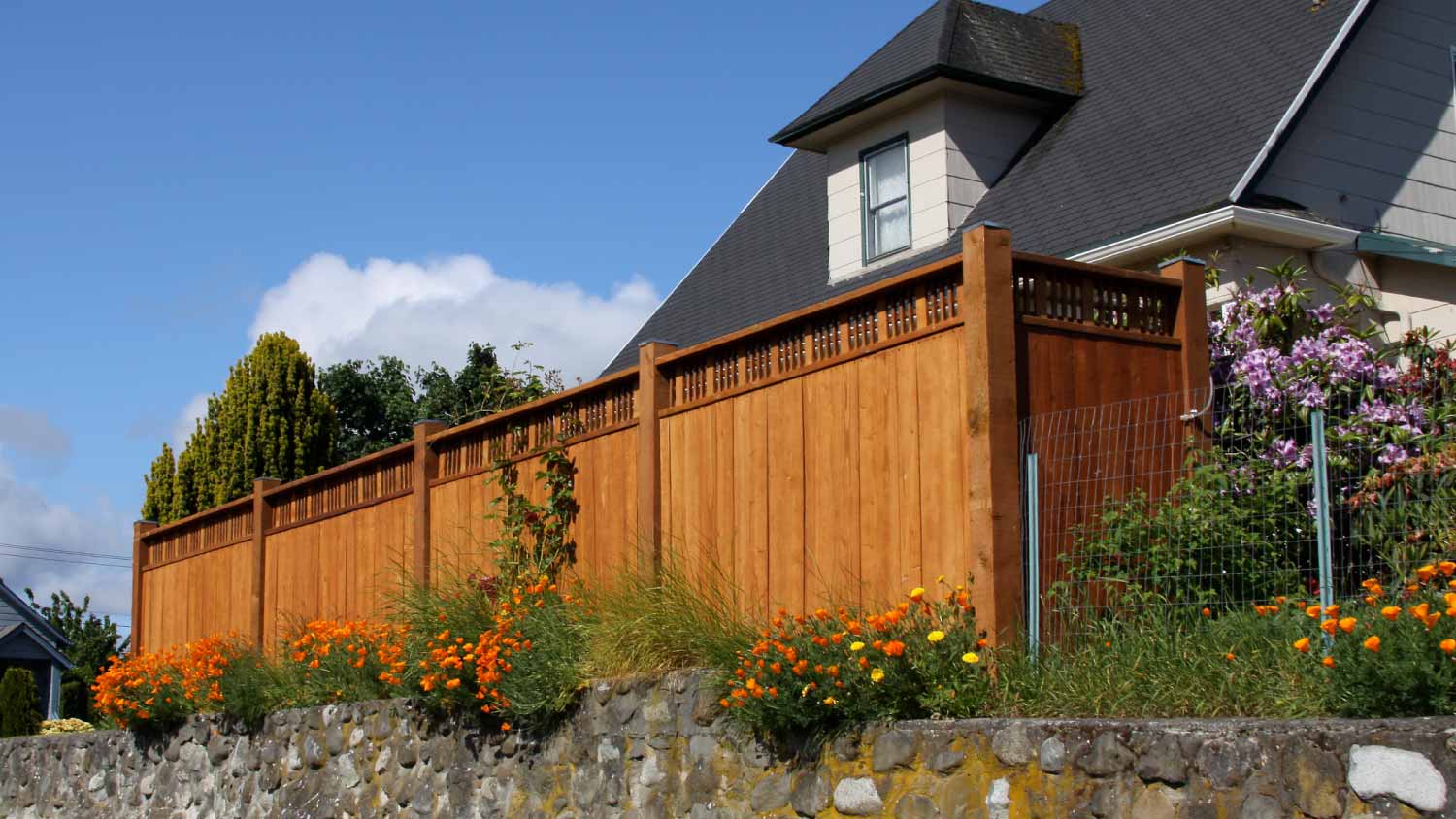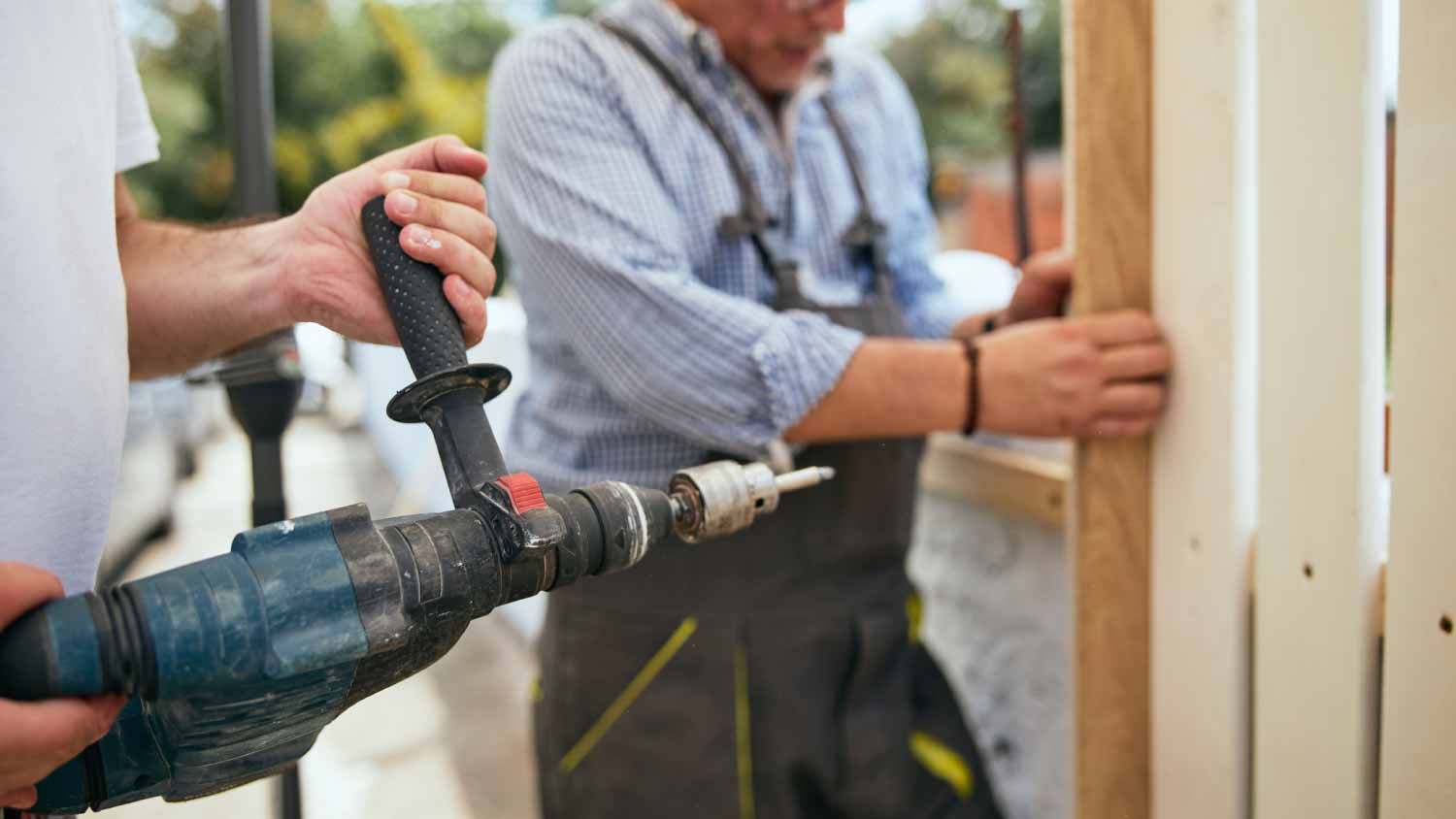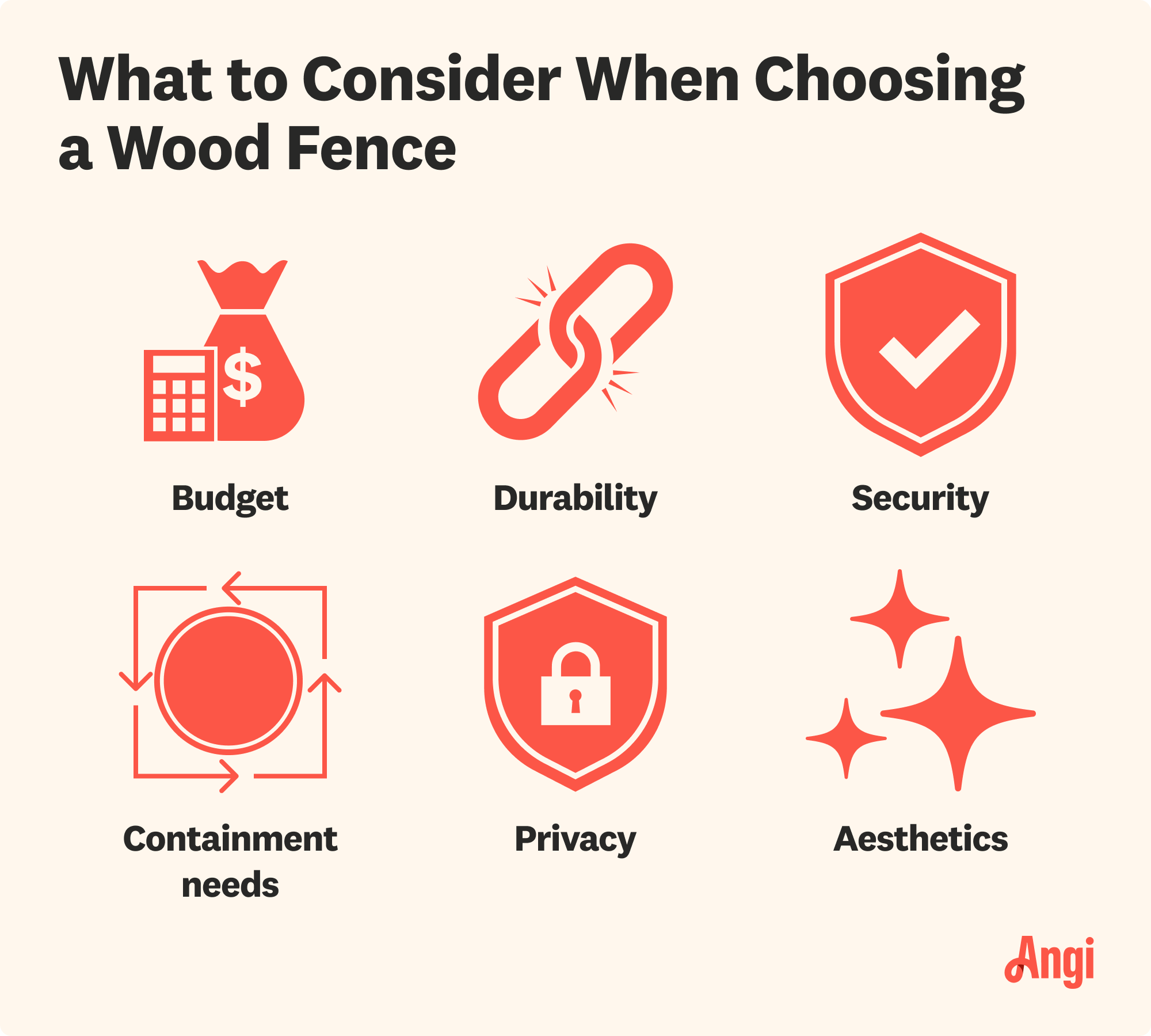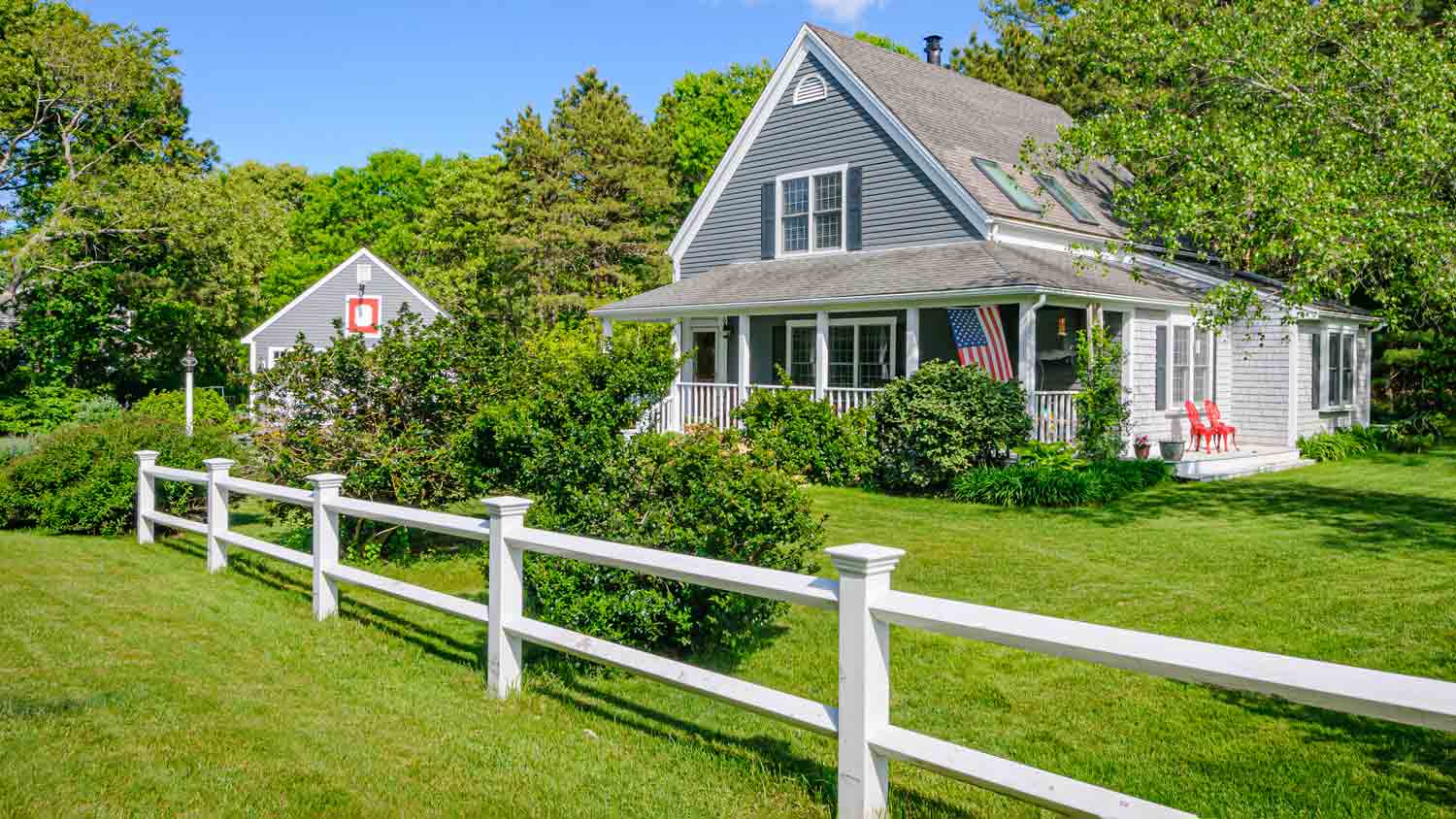
Pool fence costs depend on the type of fencing and the size of your pool. This guide will help you figure out the true cost of pool fence installation.
Give your fence the best shot at a long life


If you own a wood fence—or are thinking of building one—you may wonder: how long does a wood fence last? Wood fences last about 15 years on average, but you can get up to 20 years from one. How long a wood fence lasts depends on several factors, such as wood type, climate, and exposure to wildlife and pests. You might start noticing some wear and tear—such as rotting and splitting— around the 15-year mark. This guide will walk you through the expected lifespan and what you can do to prolong the life of your wood fence.
A wood fence lasts 15 to 30 years. Some woods, like cedar and cypress, have longer lifespans. People living in harsher climates with extreme heat or cold snaps often need to replace their wood fences sooner than 15 years. Similarly, if you live somewhere with pests like termites, wood-boring beetles, and squirrels, your wood fence’s lifespan will be shorter. No matter what type of wood fence you have, regular maintenance can help your fence last closer to 20 years.

Three main factors impact how long a wood fence lasts: wood type, climate, and wildlife and bugs.
Choosing which type of wood to use in your fencing project can be difficult due to factors such as climate, aesthetics, and budget. Consider contacting a pro for advice on which is best for your home.
The material can matter as much as the type of wood fence you select. Choose a wood that’s dense, durable, and long-lasting. Here’s a look at the best wood for fence posts and their lifespans:
| Wood Type | Lifespan (Years) |
|---|---|
| Pressure-treated pine | 15 |
| Oak | 20 |
| Redwood | 25 |
| Cypress | 25 |
| Cedar | 25 |
Consider your climate when choosing wood for your next fence. Weather conditions can impact the type of wood you select, so it’s essential to know which woods would fare best in your area. Consider cedar, redwood, and cypress for humid areas with a lot of rainfall. These wood options are more water-resistant, meaning that you may see less rot, mold, and mildew. For drier, more arid climates, pine and spruce are good options. No matter what wood you choose, proper maintenance goes a long way in helping sustain the longevity of your wood fence.
Some bugs and wildlife can munch away at your wood fence’s longevity. Pests like termites, carpenter ants, and wood-boring beetles can burrow into wood, eating through it to cause permanent structural damage. Rodents like squirrels can perch and gnaw on your pristine fence, while birds can leave acidic droppings that erode the wood. Prevent this fate by staining your fence and using insecticides.
Even the most durable, well-maintained wood fence won’t last forever. So, how do you know when it’s time to upgrade? Here are some signs that it’s time to replace your fence:
Loose boards
Rotting wood
Warped or cracked wood
Sagging or leaning fence
Mold or mildew growth on wood
Insect damage, such as holes or tunnels
Multiple loose or unsteady fence posts
Fence is old (over 10 years) and requires frequent repairs
The cost of frequent repairs totals more than 50% of the cost to install a new fence

You don’t have to work around the clock to ensure your wood fence lives a long life. In fact, most protective measures take little time or only need to be done once in a blue moon. Keep reading to find out exactly what you need to do to give your barrier the best shot.
Waterproofing your wood fixtures is easy to do. It offers many benefits beyond simply making a fence more durable—like giving it a glossy glow and extra aesthetic appeal and ensuring that UV rays don’t cause its color to fade as much over time. But the main reason to seal or stain a wood fence is to limit the growth of things like mold and fungi and prevent warping and rot. Remember that you may need to re-waterproof your fence occasionally because most water-repellent coatings offer between six months and two years of protection.
Don’t wait to fix parts of your fence. Pay close attention to any signs of damage, mold, or rot and act on them as soon as you notice them on any wood plank or board to preserve the integrity of the whole structure. Remove and replace any posts, planks, and boards showing signs of serious damage—like mold or fungi that could infect the rest of your fence—and patch up minor damage like scratches and chips with a few tricks to restoring an old wood fence.
Flora and fauna, while beautiful, are loaded with moisture. While it may look dreamy to have an abundance of vines growing up your fence, or the leaves of a weeping willow gently grazing the top of its planks, it will last much longer if you keep plant life away from it. Along with causing rot from moisture, plants also carry insects like termites that can infect and damage the wood, as well as things that can cause rot, like spores and fungi.
Even if everything seems to be in tip-top shape, schedule a time every year to examine your fence closely. This is a good opportunity to see if you need to apply another layer of waterproofing—dark spots and warping are signs that this could be a problem—and if there are any insect infestations or scratches that need treatment before they get worse.
A rot board is a long wood plank that attaches to the bottom of your fence to intercept moisture from the soil below and prevent it from impacting the rest of the wood. Experts recommend keeping fences away from soil, and rot boards make it possible to do so without uprooting your entire lawn. When you start noticing rot or similar damage forming on the bottom plank, simply remove and replace your rot board—it’s much more affordable than overhauling your whole fence.

There are a few telltale signs that can help you determine whether to repair or replace fence posts. Your fence might be in need of some TLC and light repair work if there’s discoloration, minor cracks, or splinters. But you need to take repairs a step further and opt for a full-blown replacement if you notice rotting, mold and mildew, leaning posts, or a pest infestation.
The average fence repair cost is $600, but it can range between $300 and $925. (You’ll also want to factor in the fence removal cost, too.) Knowing how to keep fence posts from rotting can save you money, but it may be time to replace them if several posts are missing or are beyond repair. You’ll also want to consider replacing your fence if there are multiple missing fence boards and it’s simply not functioning as it should.
From average costs to expert advice, get all the answers you need to get your job done.

Pool fence costs depend on the type of fencing and the size of your pool. This guide will help you figure out the true cost of pool fence installation.

The cost to install a picket fence varies by height, material, labor, and more. Read this guide to help you budget for a picket fence installation.

Get a detailed breakdown of chain link fence repair costs, including average prices, cost factors, and tips to help homeowners budget for repairs.

Installing a fence requires some simple math to ensure the correct answer to the question, “How deep should my fence post be?”

If you assumed your hilly yard disqualified you from building a fence, think again. Here’s how to build a fence on a slope, including two ways to do so.

Fence removal costs are highly variable, depending mainly on the size and type of fence. Read on and learn why labor will always be your biggest spend.